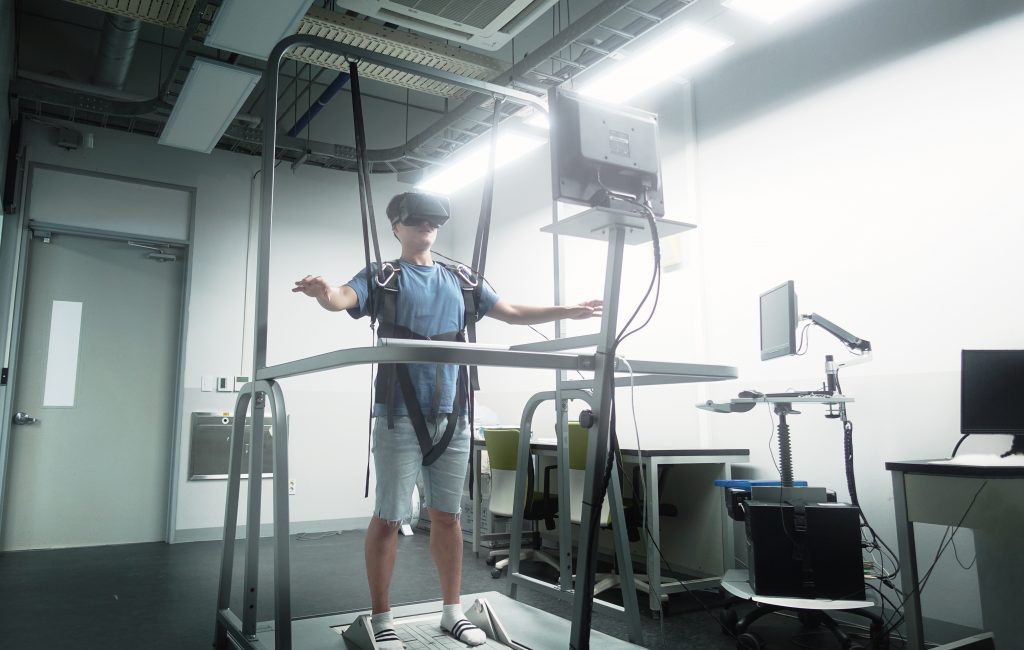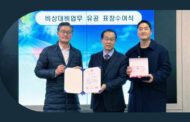A year of human factors engineering demonstrations is scheduled to take place in the main lobby of Business Administration Building (114) at UNIST on September 10, 2019.
This year marks the 2nd HEF Labs’ Demonstration Day. The event will provide a great opportunity for prospective students to see and experience ins and outs of the research labs within the Department of Human Factors Engineering at UNIST. This year’s demo day exhibition features presentations and demonstrations from eight HEF research labs, as well as introducing their achievements and ongoing research projects.
Each booth will be equipped with fun and interesting elements to give students access to a realistic lab experience, which includes VR experience programs and immersive video experiences.
“The annual HFE Labs’ Demonstration Day is a great opportunity for faculty to showcase their ongoing research projects through demonstrations of new technologies and techniques,” says Dean YoungShin Kwak of School of Design and Human Engineeing at UNIST. “It also provides a platform for researchers to provide input on future research needs in human factors engineering.”
[Introduction to HFE Labs in Alphabetical Order]
BCI (Brain-Computer Interface) Lab – Professor Sung-Phil Kim
The ‘BCI Lab’ by Professor Sung-Phil Kim aims to understand how neural signals code information and to develop a system that harnesses neural signals to actuate external systems or to provide feedbacks of the brain state. On demo day, they plan to demonstrate the controlling of robotic arms, as well as the tactile intelligence in robots via the use of tactile sensing. Through demonstrations, they will explain the Brain Machine Inferface (BMI) technology, as well as the spike signals that are perceived through the multielectrode array on the cortical surface. Then, they will unveil the primate-based BMI technology that is currently being performed in the lab, as well as the robotic arm adjustment process of the patient, using the same process. In addition, the robotic tactile intelligence technology, known as ‘3-finger Gripper’ will be introduced.
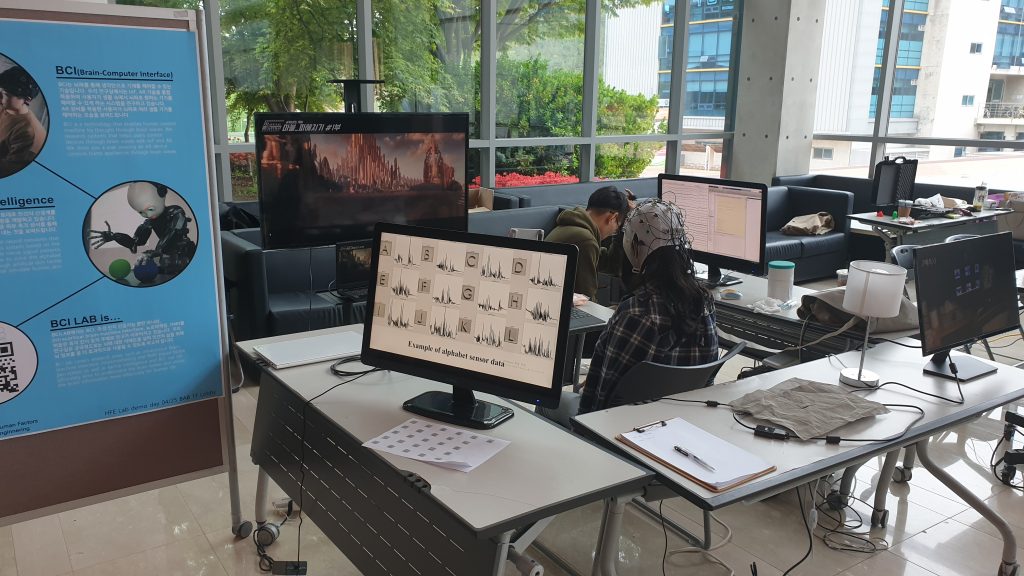
CIS (Color & Imaging Science) Lab – Professor YoungShin Kwak
The ‘CIS Lab’ by Professor YoungShin Kwak carries out studies on color science. They plan to introduce the basics of color science through this demonstration day and introduce various examples that the same color can be perceived differently depending on the viewing environment. The monitor image and lighting booth installed in the booth offer a new experience. The ‘color appearance’ phenomenon embodied in the display shows that when a person perceives a color, he not only sees the color of the object but also interprets the context to recognize the color. In addition, they plan to introduce lighting color issues, research trends related to the HDR display industry, and image quality improvement research.
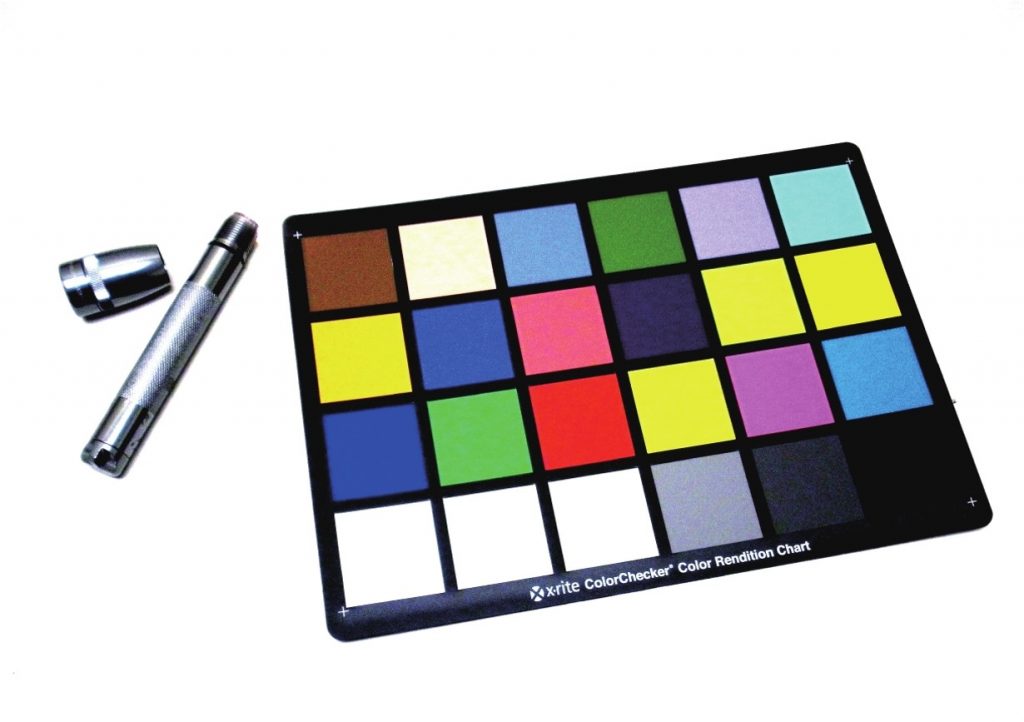
DNCE (Decision Neuroscience & Cognitive Engineering) Lab – Professor Dongil Chung
The ‘DNCE Lab’ by Professor Dongil Chung studies the neuroscientific mechanisms that underlie decision making and valuation through psychological and economic experiments. To demonstrate this, they will demonstrate a simple “gambling game” and the “ultimatum game”, thus by comparing the results with the existing research data, they will describe each participant’s characteristics. In addition, there will be posters, showcasing the themes and achievements of DNCE Lab, to help visitors understand the material.
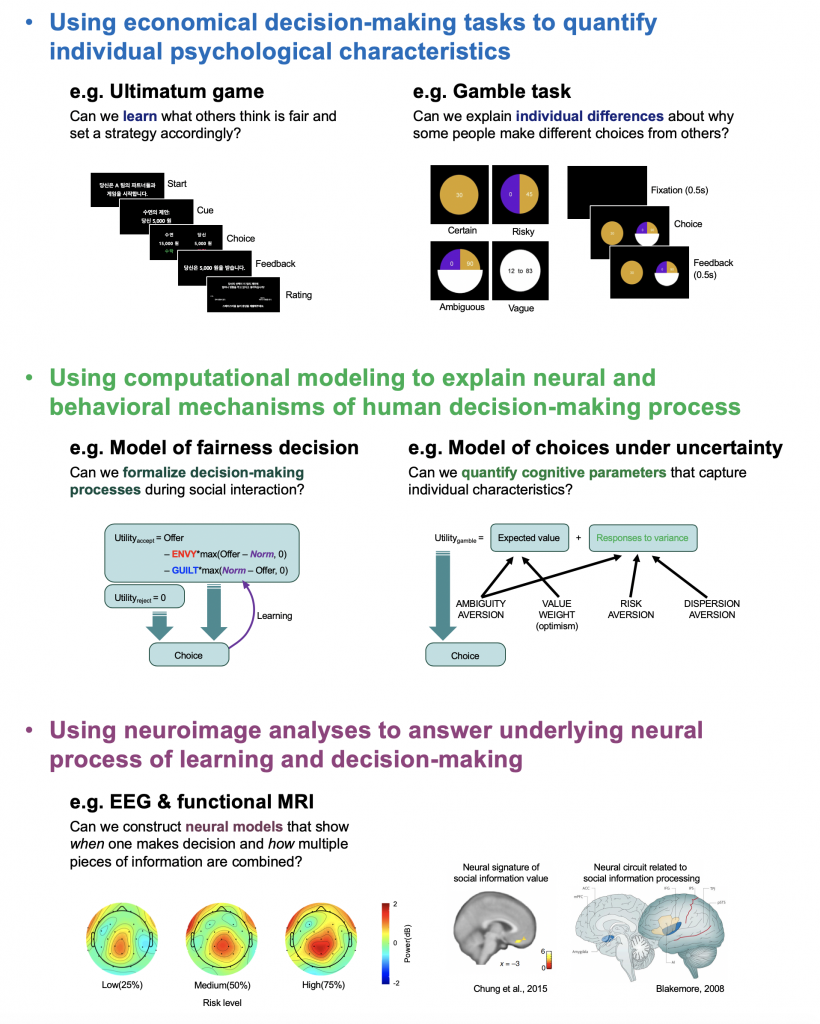
Ergonomics Lab – Professor Gwanseob Shin
The ‘Ergonomics Lab’ by Professor Gwanseob Shin carries out research on the characteristics and limitations of the human body, research is underway to design convenient and safe products and environments. On demo day, they will introduce major research by demonstrating walking analysis system. Their booth will exhibit FDM equipment that analyzes the pressure exerted on the body in standing or walking postures and introduces research using the same. In addition, there are many opportunities to explore novel human factors and ergonomics methodologies, which include attachable IMU sensors to monitor body movement, Myo sensors to measure muscle activity and help process electrical signals produced by the muscle in arms.
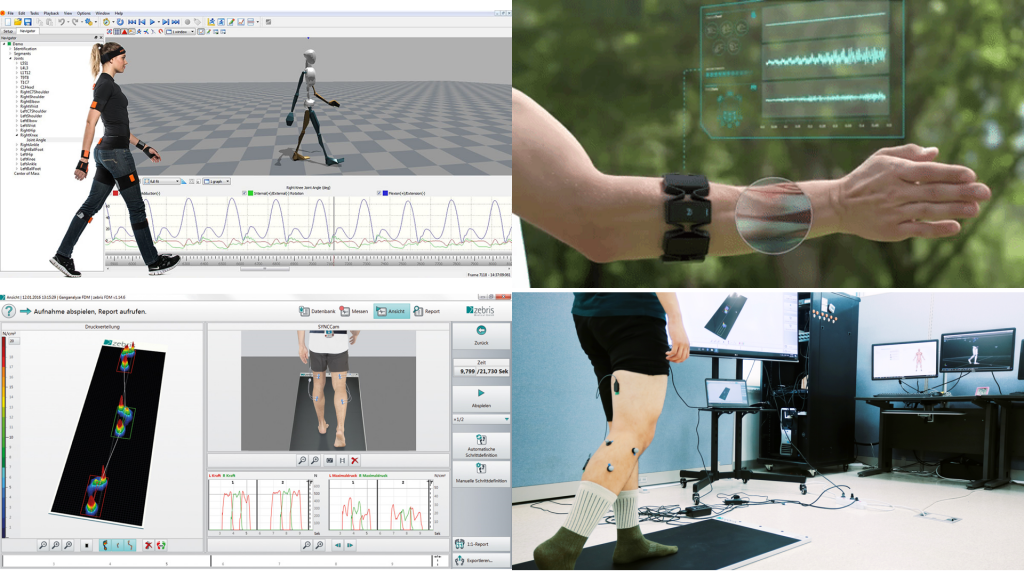
Healthcare Lab – Professor Dooyoung Jung
The ‘Healthcare Lab’ by Professor Dooyoung Jung carries our research to enhance the experiences of the general public, patients, and caregivers using the latest technologies, such as web, mobile and virtual reality (VR). In this event, they will introduce related studies by showing how to reduce social anxiety disorder using VR and how to improve healthcare center service using chatbot. VR can be a tool to phase out anxiety disorders by creating simulations of college students’ common situations. Similarly, chatbots are becoming a way to improve service satisfaction and accessibility in healthcare centers. At their booth, participants can experience how cutting-edge technologies can change our lives.
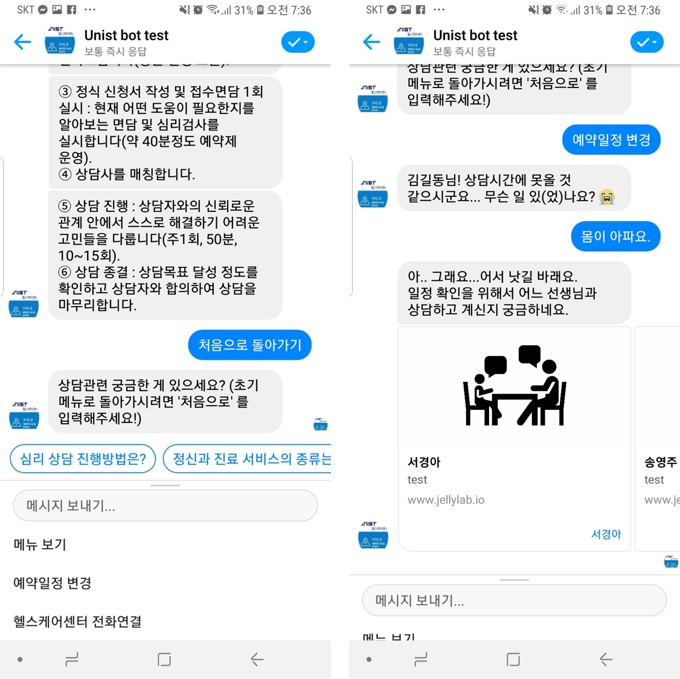
Interactions Lab – Professor Ian Oakley
The ‘Interactions Lab’ by Professor Ian Oakley carries out research on human-computer interaction. These studies apply widely to design, computer engineering, and psychological methods, including wearable computers and user experiences in mobile environments. On demo day, they plan to showcase the touch interface worn on nails and the finger touch model applied to the smartwatch keyboard. Their booth will also provide a variety of other prototypes, allowing you to experience the exciting and unique interface unique to Interactions Lab.
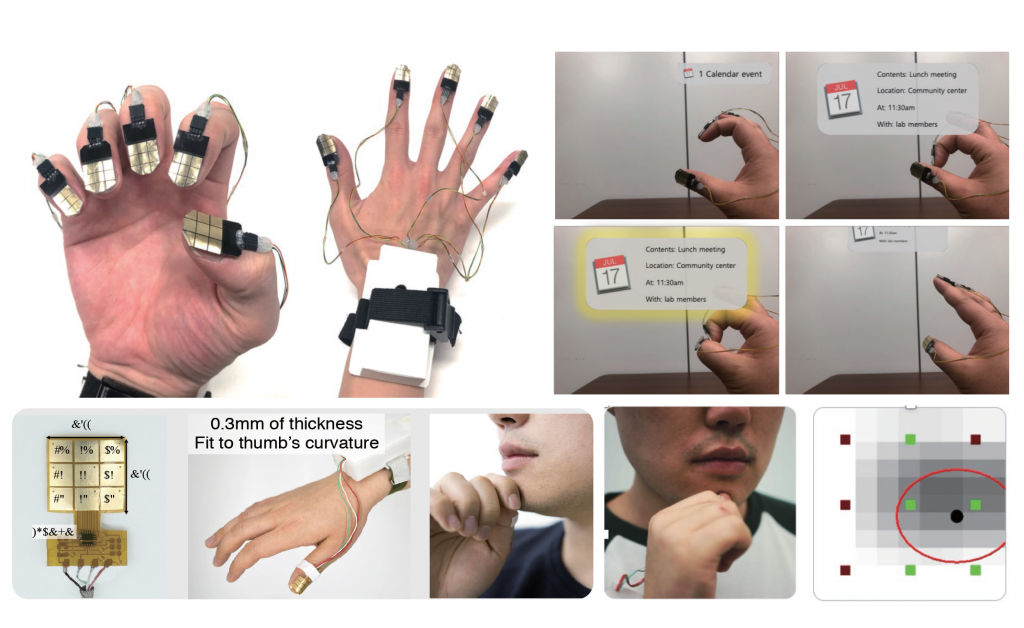
Ix (Interaction & eXperience) Lab – Professor Gyouhyung Kyung
The ‘Ix Lab’ by Professor Gyouhyung Kyung, which studies interactions and experiences, applies ergonomic research methodologies to provide a better user experience for new designs and products. In particular, the lab focuses on the studies on the development of products/systems, utilizing future technologies and these can be found on this demo day. On demo day, they plan to showcase the core topics of the lab, including the study of futuristic smartphones (foldables and rollables) and the study of futuristic vehicles and monitors.
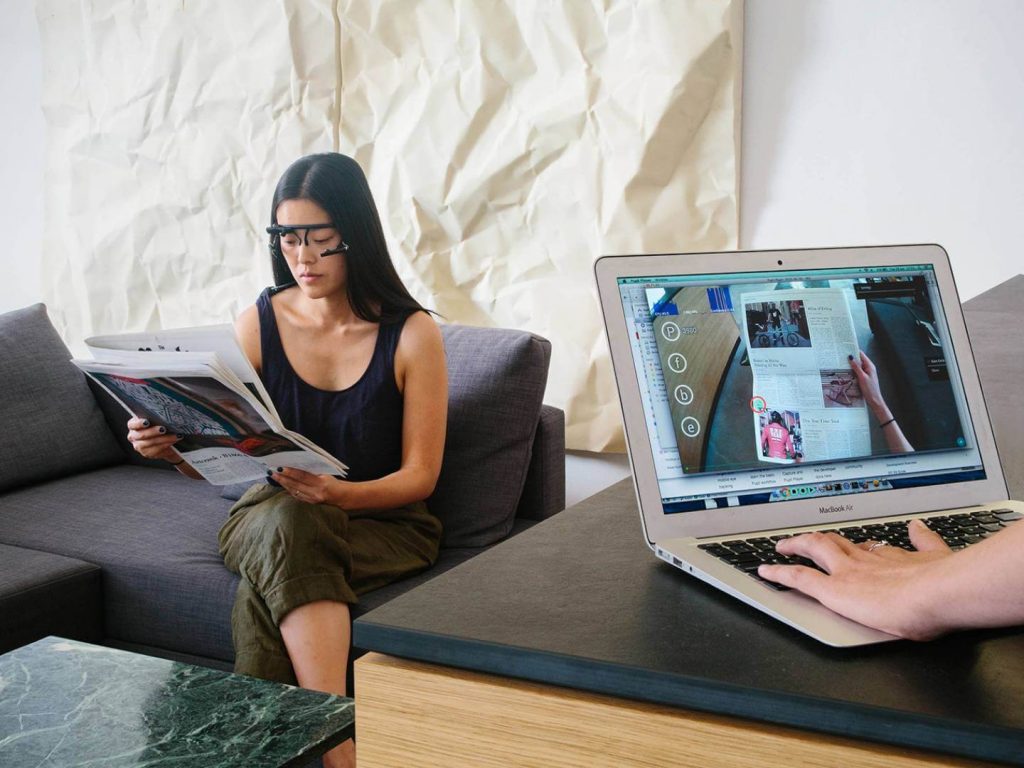
PAL (Perception & Action) Lab – Professor OhSang Kwon
The ‘PAL Lab’ by Professor OhSang Kwon carries out research that deals with the fundamental principles that govern the process of human perception and action, and apply those knowledge to improve the quality of life. Their current research focuses on the patterns of perceptual errors that occur in situations where sensory signals are uncertain are measured through various optical illusion experiments, and a computational model of the underlying action of the patterns is elaborated and refined. On demo day, they plan to showcase the optical illusion experiment and provide an opportunity to explore videos in relation to these experiments.
